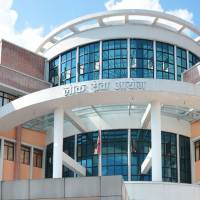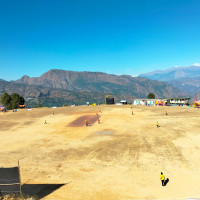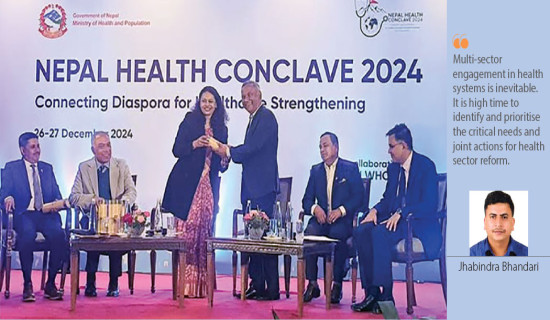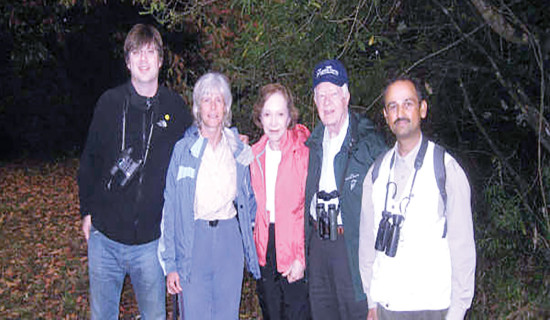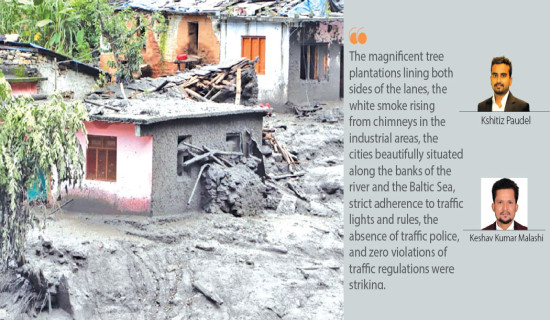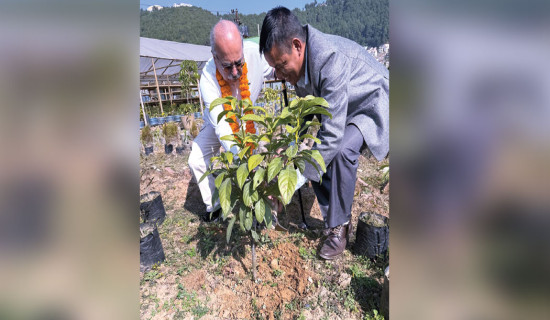- Friday, 3 January 2025
I have fulfilled 50% of poll promises: Chairman Raya
Barju Rural Municipality is one of the 12 local levels in Sunsari district. It borders with India. It consists of six wards and has a population of 36,249. The rural municipality is named after the Barju Lake, which holds historical, touristic and religious significance and is mentioned in the Mahabharata. Our Inruwa correspondent Jaya Krishna Yadav recently talked to Barju Rural Municipality’s Chairman Jiwachha Kumar Raya regarding the development of the rural municipality including health, education and agriculture sectors. Excerpts:
Have you fulfilled the election promises you made two years ago?
I have fulfilled 50 per cent of the promises. At least one major project with a budget of more than Rs. 10,000,000 has been implemented in each ward. In the first two years, over 20 kilometres of roads at the federal, provincial and local levels have been improved. Construction work is underway to blacktop all main roads in the rural municipality within three years. Religious sites, temples and shrines have been renovated. Some consumer committee projects have been standardised and completed..
Since I was elected chairman, the rural municipality has been holding public hearings at the municipal and ward levels. We have worked for the proper disposal of waste generated by health institutions. Additionally, we have implemented the e-attendance system at ward offices and fenced them.
What are you doing for the development of Barju Lake?
The local budget alone is insufficient for the development of Barju Lake as it requires billions of rupees. I have been informed that preparations are underway to implement a large project worth approximately Rs. 11 billion with the support of federal funds and donor agencies. The first phase of the project with a budget of Rs. 4.5 billion is about to commence.
Will you name one of the projects you launched?
We have constructed historical and religious relics associated with the Mahabharata and structures such as a pond, a hall accommodating 500 people and a stage at Ramjanaki Temple expanding over 200 bighas in Ward No. 3. The project was funded with Rs. 30 million from the Tourism Ministry and Rs. 2.5 million from the rural municipality.
What steps are being taken for the development of education?
We have activated the village education committee and ward education committees to monitor community schools. With the participation of experts, we have monitored the educational quality of each school and provided feedback and suggestions for improvement. We have equipped eight government schools with the necessary infrastructure including drinking water and toilets. We constructed 20 classrooms in community schools in the past two years. Construction of the additional six classrooms has reached the final stage. I have instructed teachers to focus on student-centred teaching in classrooms. Being a former teacher myself, I have paid extra attention to education.
What is the state of health services in Barju?
I have facilitated health posts and basic health units with human resources and ensured the distribution of free medicines throughout the year. The rural municipality has been conducting health camps and providing medical treatment to the poor people. Initiatives have been taken to implement the programme ‘one hospital, one local level’ announced by the previous government. Furthermore, construction work on the 15-bed hospital has commenced. Although the foundation stone of the hospital was laid before I was elected, work had not begun until recently.
Does the waste from Biratnagar Metropolitan City in Morang district pose a major challenge for Barju Rural Municipality compared to its waste? What steps are being taken to overcome the problem?
It is true that due to the lack of waste and sewer management in Biratnagar Metropolitan City, we have to endure a foul smell year-round. The metropolis dumps thousands of tons of both biodegradable and non-biodegradable waste into the Keshalya River daily, significantly affecting residents of two wards. This waste annually damages the riverbanks but the problem remains unsolved. Neighbouring districts and the metropolis have not taken significant steps toward a sustainable solution, creating a significant challenge for us.
What is the status of agriculture in Barju?
We initiated the implementation of a land use policy categorising land for agriculture, industrial and residential use. We have distributed agricultural motors with subsidies for year-round irrigation, providing 50 per cent subsidies on agricultural tools, and improved varieties of rice, wheat and maize seeds. However, there is a need of modern agriculture as motors could not be operated due to fluctuations in electricity voltage.
What can other local governments learn from Barju?
We have provided electric motors for irrigation to all farmers. We have worked on conserving Barju Lake, Everest Science Centre and local community heritage sites as tourist attractions. We are maintaining good governance and quality in development while striving to make Barju a corruption-free local level. We have learned that we need to work with our plans, policies, and programmes and we are working on improving education, health, drinking water, agriculture, electricity and road infrastructures.
How did you feel after reading this news?

.jpg)

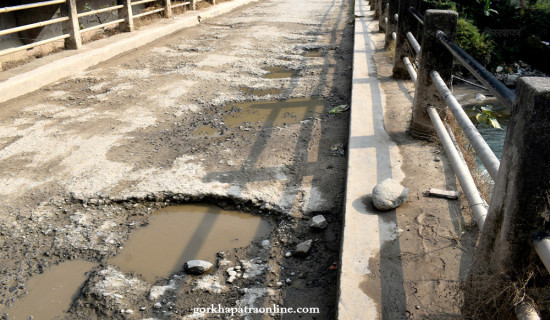

-square-thumb.jpg)

